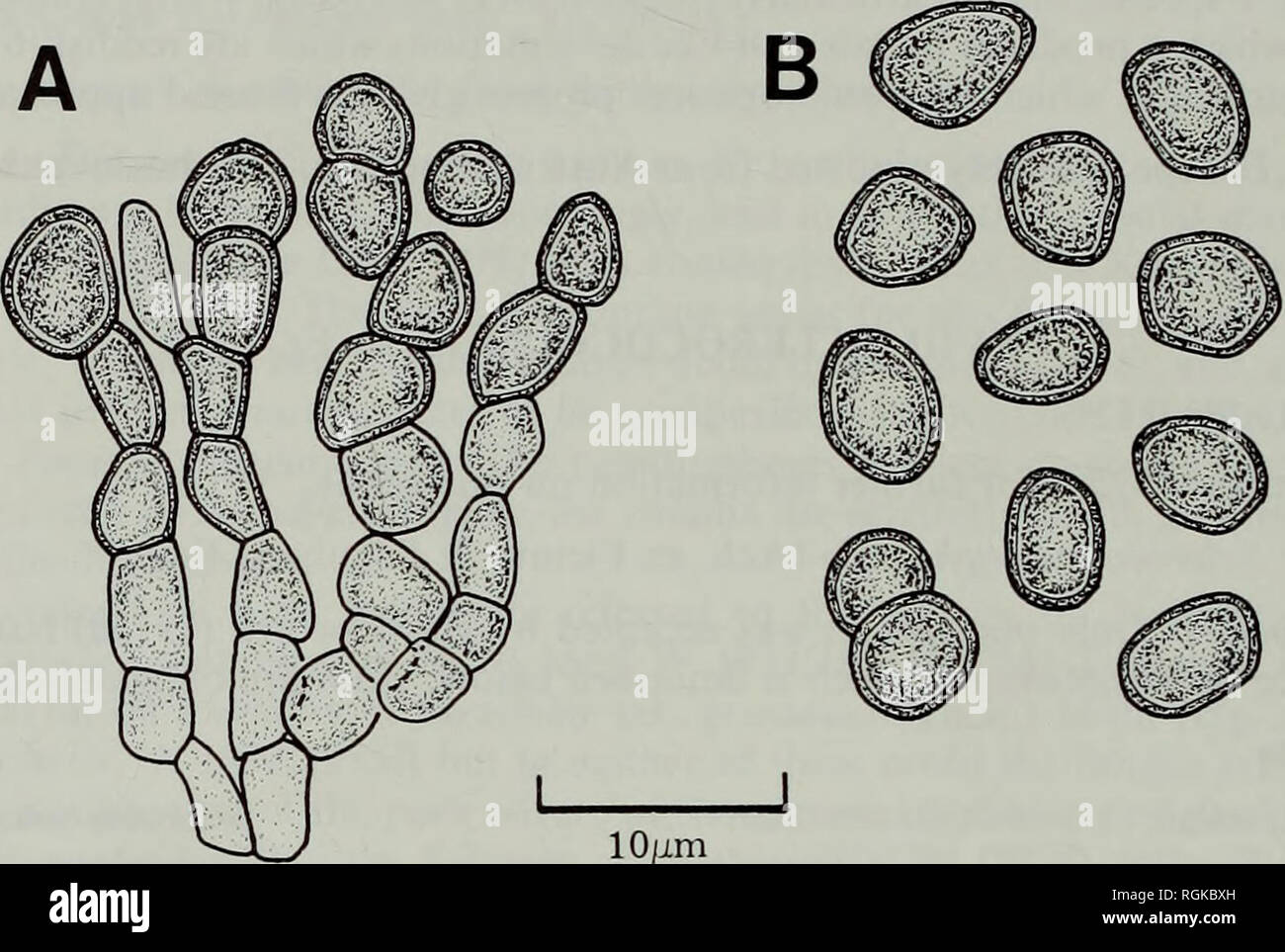. Bulletin of the British Museum (Natural History) Botany. 250 D. L. HAWKSWORTH Observations: The superficial appearance of this species is remarkably similar to that of Sclerococcum sphaerale, which is known to inhabit saxicolous but not corticolous Pertusaria species, but on microscopic examination proves to be readily distinguishable by the 0(-l) celled conidia and less complex conidiogenous apparatus. At first I wondered if S. simplex should be placed in the same genus as S. sphaerale but as they agree in most characters apart from the arrangement of the conidiogenous cells and the conidia

Image details
Contributor:
Book Worm / Alamy Stock PhotoImage ID:
RGKBXHFile size:
7.1 MB (344.6 KB Compressed download)Releases:
Model - no | Property - noDo I need a release?Dimensions:
1928 x 1296 px | 32.6 x 21.9 cm | 12.9 x 8.6 inches | 150dpiMore information:
This image is a public domain image, which means either that copyright has expired in the image or the copyright holder has waived their copyright. Alamy charges you a fee for access to the high resolution copy of the image.
This image could have imperfections as it’s either historical or reportage.
. Bulletin of the British Museum (Natural History) Botany. 250 D. L. HAWKSWORTH Observations: The superficial appearance of this species is remarkably similar to that of Sclerococcum sphaerale, which is known to inhabit saxicolous but not corticolous Pertusaria species, but on microscopic examination proves to be readily distinguishable by the 0(-l) celled conidia and less complex conidiogenous apparatus. At first I wondered if S. simplex should be placed in the same genus as S. sphaerale but as they agree in most characters apart from the arrangement of the conidiogenous cells and the conidia not usually being multicellular in S. simplex, and further as they occur on allied hosts, it seems most prudent to enlarge the concept of Sclerococcum to include this species.. lOum Fig. 32 Sclerococcum simplex (E—holotype). A, Conidiophores and conidia. B, Conidia. 2. Sclerococcum sphaerale (Ach. ex Ficinus & Schubert) Fr., Syst. orb. veg. 1 : 173 (1825). (Fig. 33) See Hawksworth (1975a : 223-227) for description, extensive synonymy and further observa- tions on this species. Hosts: On saxicolous Pertusaria species, most commonly encountered on P. corallina (L.) Arnold thalli. There are erroneous and unsubstantiated reports from a wide range of other hosts (see Hawksworth, loc. cit.); to these can be added one reputedly on Caloplaca saxicola (Hoffm.) Nordin (Wheldon, 1923). Distribution: Europe. Reliably recorded at least from Austria, the British Isles, Czechoslovakia, France, Germany, Iceland, Ireland, Italy, Portugal, Sweden and Switzerland. Specimens (additional to those listed by Hawksworth, 1975a; all on Pertusaria corallina unless other- wise indicated): Austria: Steiermark, Schladminger Tauren, Lassachtal oberhalb der Breitlahnhiitte in der Kleinsolk, alt. 1300-1500 m, 9 July 1973, J. Poelt (hb. Poelt!); Steiermark, Stubalpe, Ostrucken des Speikkogel, alt. 1750-1800 m, on indet. white K- thallus, 24 June 1973, J. Poelt 72333 (hb. Poelt!).— British Isles: Engla